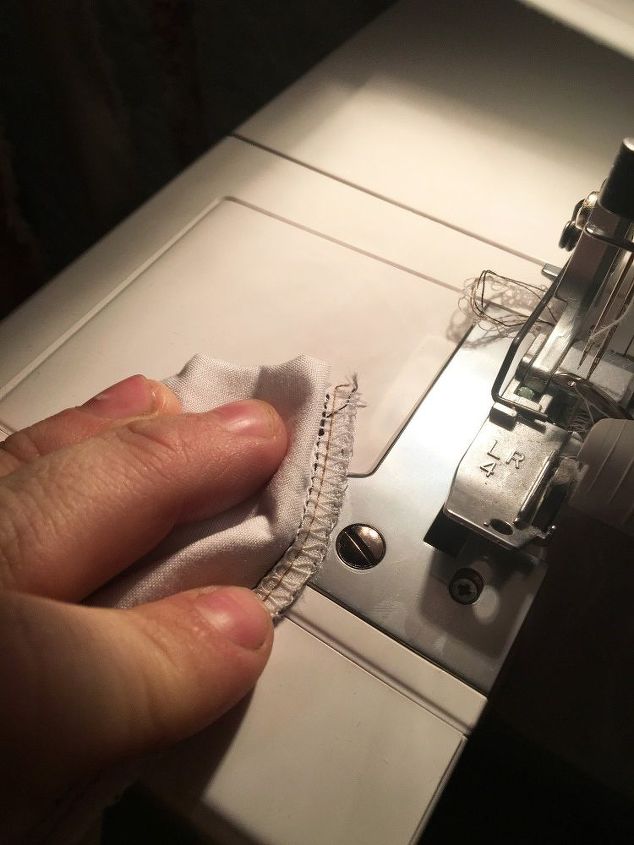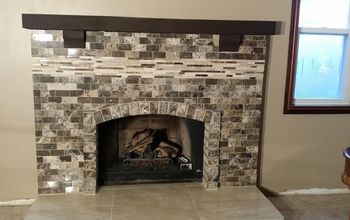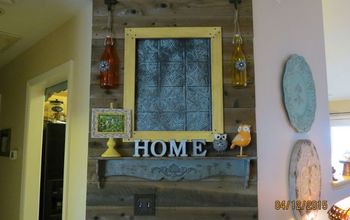Make Your Own Duvet

by
Amanda C, Hometalk Team
(IC: paid contributor)
8 Materials
$100
3 Hours
Easy
Sometimes it can be hard to find a duvet that fits your needs, but did you know you can make one? Even with a 45" fabric! This is a simple sewing tutorial that will show you how you can transform a flat sheet and several yards of fabric (no matter the width) into a custom duvet cover!
Find the full list of materials to buy in order to complete this project, in the Materials section of this project.
We want to help you DIY, so some of the materials in this post are linked to sellers. Just so you know, Hometalk may collect a small share of sales from the links on this page.
SUPPLIES: -5 Yards of Fabric (Mine was 45" wide) -1 Flat Sheet in the Size of Your Comforter -Sew On Hook and Loop (Velcro) -Scissors -Sewing Machine -Thread -Comforter to be covered (not pictured above)
STEP 1: Measure your comforter Measure the length and width of the comforter you are trying to cover (mine is a queen size).
STEP 2: Measure your sheet You will need to add several inches to your measurements to allow for seam allowances. For the sheet which will serve as the back of the duvet you will add 6" to the length and 4" to the width. For the front or top of your duvet you will simply add 4" to both the length and the width. For instance my comforter measured at 84"x86" so front/top of the cover at 88"x90" and the back/bottom at 88"x92". Cut your flat sheet to the appropriate length and width. Remember that this serves as the back/bottom of your cover and will need the additional 6" in length and 4" in width.
STEP 3: Cut your fabric Cut the top/front portion of your duvet out of the fabric of your choice. Because most fabrics are only sold with a width of 42-60" you will need to cut 3 separate panels out which is why this calls for so many yards. Cut your first piece out with the full width of the fabric and the length needed according to your measurements (plus the 4"). My first piece measured at 45"x90". Now you need to figure out how much of the width still needs to be covered. For example, my comforter has a width of 84" plus the 4" seam allowance (88") and my middle panel is only at 45" wide meaning I still need to cover 43".
STEP 4: Cut out 2 more panels Now you need to cut out 2 more panels to cover the remaining width (for me 43"). You will want these panels to measure evenly. Each will of course have a length that measures the same as your middle panel and each width will need to be your remaining width cut in half plus a 1/2"-1" seam allowance. Since my remaining width is 43" each side panel needs 21.5" plus an extra 1/2" seam allowance to connect it to the middle panel meaning each panel measures at 22" wide and 90" long. Place your side panels one on each side of the middle panel you just cut out in step 3. Normally you would cut off the selvage edge, but I knew it would be eaten up in my 1" seam allowance so I just left it in. (*I hope this isn't too confusing)
STEP 5: Sew your panels together Lay your side panels and your middle panel face to face and sew them together making sure the lengths line up. If you have a certain pattern try to make sure they line up as well as possible. press the seams nice and flat.
STEP 6: Sew an opening for the comforter Once the three panels of your top layer are sewn together you can sew one end (width to width) in place for the opening where the comforter will be fed into. Fold over 1" and then another and pin down. Then sew this fold in place.
STEP 7: Create a pocket for the comforter Now grab the bottom piece of the duvet (the flat sheet) and fold over the top portion of the sheet 6" to create a pocket for the comforter end to slip into and pin it in place.
STEP 8: Sew the top and bottom piece together Now Your top and bottom piece are ready to be sewn together. You will only be sewing 3 sides of the cover. Make sure to match up the sewn over edge of the top piece and the 6" folded pocket of the bottom. These will be where the comforter is fed into the duvet. Sew all 3 other edges together with a 1" seam allowance.
If you have a serger, serge the edges to give the duvet greater durability. This will also cut off the excess seam allowance. If you don't have a serge machine you can cut away any excess fabric and do a zig zag stitch making sure the thread goes around the edge of the fabric.
STEP 9: Now all you have to do is add some velcro to the opening so you can close the duvet around the comforter. With the duvet still inside out attach one piece of the velcro to one side and the other to the opposite side so that they line up and sew them in place by sewing around the perimeter of the velcro piece.
STEP 10: Insert your duvet Now simply insert your comforter into the duvet and velcro it shut!
Now Simply place your blanket where you wish and cuddle up!
I ordered this fabric online and in person I am not sure how I feel about it, but with how easy this was I may make another one soon... My husband says it looks like an 80's tie hehe... in hind sight I would have rather purchased a printed sheet and had a double sided duvet!
Enjoyed the project?
Resources for this project:
See all materials
Any price and availability information displayed on [relevant Amazon Site(s), as applicable] at the time of purchase will apply to the purchase of this product.
Hometalk may collect a small share of sales from the links on this page.More info
Published January 29th, 2017 4:34 PM
Comments
Join the conversation
2 of 118 comments
-
 Carey Marshall
on Dec 28, 2022
Carey Marshall
on Dec 28, 2022
Looking at the fabric content first Then the process. If it is sanforized, it is preshrunk, sometimes fabric will say it is preshrunk but not always. If it has any polyester in it it will not shrink. Cotton is more likely to shrink and that makes it a good idea to wash it first.
-
-
















































Frequently asked questions
Have a question about this project?